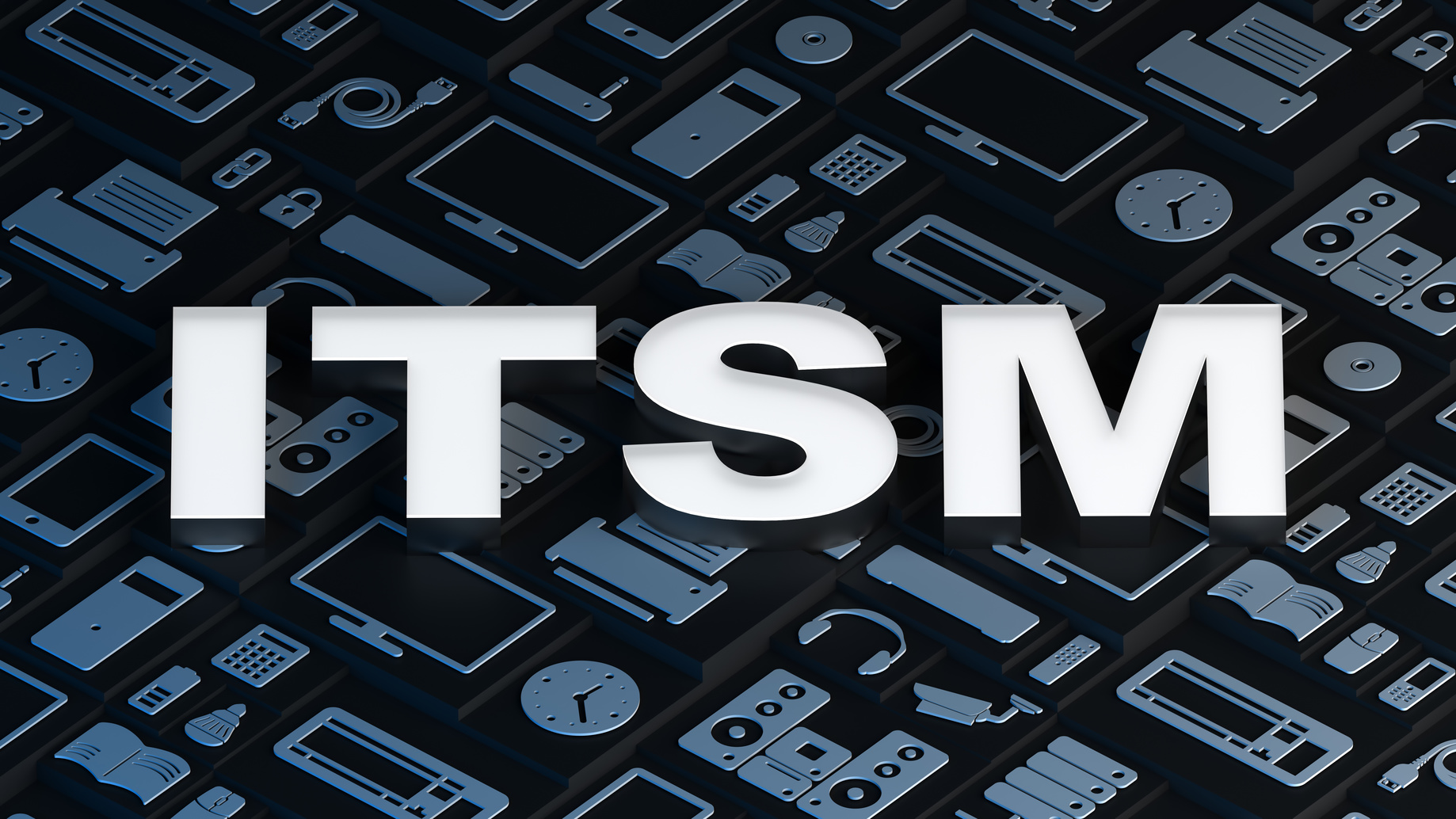“Digital” and “digital transformation” are terms that are often (mistakenly) interchanged.
“Digital” recognizes that the use of technology is critical for achieving business strategy. But as George Westman stated in his MITSloan Management Review article1, “Technology doesn’t provide value to a business…instead, technology’s value comes from doing business differently because technology makes it possible.”
Which brings us to “digital transformation”.
Digital transformation is really ‘business transformation’ – establishing new ways of doing business, taking a ‘digital-first’ (or technology-based) approach. But it is not just about implementing technology for technology’s sake. It’s about developing a business strategy targeting specific market spaces and then identifying and exploiting the appropriate technologies that allow the business to realize its strategy within those market spaces.
Has IT Service Management (ITSM) kept up with the pace of digital? Is ITSM able to evolve with organizations undergoing digital transformation?
Traditionally, ITSM solutions have typically been workflow management engines with some limited process orchestration capabilities. But over the past couple of years, ITSM vendors have been scrambling to incorporate more digital functionality2 within their offerings.
But beyond the implementation of tool solutions, many ITSM implementations really don’t manage services – they manage processes or activities. Those ITSM implementations are inwardly-focused, typically addressing the operational activities involved with supporting and delivering technology.
The Impact Of Digital On ITSM
Will digital result in the death of ITSM?
ITSM is not dead3 as many would have you believe. In fact, the need for effective ITSM has never been greater. But digital is having significant impact on ITSM.
Technology advancements have enabled activities defined within traditional service management – activities that in the absence of technology, required significant manual effort – if they were done at all. For example, the ability to filter and correlate events is now feasible due to digital technologies. Providing consistency in testing and validation activities described by traditional ITSM is no longer so time and resource intensive because of process automation.
But the use of technology has expanded and moved beyond the domain of just a single organization within the enterprise – typically the IT organization – and into new ways of delivering business value. Perhaps this expanded use of technology is in ways not envisioned by traditional ITSM methodologies.
Enter the digital transformation of ITSM.
Digital transformation of traditional service management methodologies will result in a new approach to service management – Digital Service Management (DSM).
How Will DSM Be Different From ITSM?
Today’s ITSM approach is typically reactionary and rarely proactive. The use of ITSM is usually limited to the IT organization. But what the IT organization does, while important, only represents a portion of the enterprise value streams within an organization.
DSM changes the paradigm of service management by exploiting the use technology such as AI, ML, cognitive computing, IoT, and more to manage the delivery of products and services from the enterprise. DSM will extend service management beyond managing and supporting the technology that has traditionally been the domain of the IT organization. This will transform how service management is done, resulting in new ways and new models for service management, and like digital transformation for business, will follow a ‘digital first’ approach.
Digital Service Management Is Not Just Process Automation
But just adding some ‘digital’ technologies won’t necessarily translate into better or faster service management. Neither will standing up a self-service portal or automating a few process activities make service management “digital”. Just as with digital transformation within a business, DSM is a true transformation of service management.
What will be some of the features of DSM?
- DSM will move service management not just from being reactive to proactive, but to being predictive by leveraging things like AI, machine learning, and cognitive computing.
- Service management will become more technology-initiated by leveraging automation and IoT, especially in abnormal operation situations. There will be no need to wait for a person to notice that something is not working properly.
- Chatbots and virtual agents will take on many (most?) of the tasks associated with consumer interaction. This will enable people to take on higher level issues, such as reduction of technical debt, innovation, and problem solving.
- The tiered support model will be replaced by a direct support model. There are two implications of this shift. First, technologies like AI, cognitive computing, and robotic process automation will detect and remediate most issues in the digital environment. For those issues that cannot be resolved via automation, the same technologies will determine which (human) resources should be alerted about the issue and send the case to those resources. The case will contain the complete record of the impact of the issue, the needed information regarding the effected consumer and attempted remediation steps.
The Promise (And Potential Challenges) Of DSM
DSM will overcome many of the constraints of traditional service management approaches, but also introduces new considerations.
Among the promises of DSM:
- Automation – Automation will result in immediate, on-demand service delivery and support.
- Improved self-service – Natural language processing used with virtual agents and chatbots will improve the consumer usability and satisfaction with self-service.
- Consistent experience – Digital service management eliminates the variability and inconsistencies of current service management approaches.
DSM also brings a set of challenges as well.
- Raising the service management game from being operations-centric to being enterprise-wide – With the pervasive use of technology from across all parts of the enterprise, the service management mindset has to shift to an enterprise view and get beyond just operational aspects.
- Missing skills for exploiting the technology- The digital transformation of service management will result in some people being displaced. Organizations must invest in training those who are displaced so that they can apply their knowledge in realizing the benefits of DSM.
- Poorly designed processes will continue to be poorly designed processes. Poorly defined services will continue to be poorly defined services. – A bad process will be a bad process; a poorly defined service will continue to be a poorly defined service. DSM will not cure poor design or definition. In fact, DSM will amplify poor designs and definitions.
- Getting the enterprise to act as an integrated organization – Organizations tend to act as collections of parts and not integrated organizations, focused on the customer.
Get Prepared For DSM
Now is the time to transform service management to DSM. But before you can transform service management, here are four things you need to do to get prepared:
- DSM must be a business initiative – DSM must be part of the overall business strategy. Think through how DSM can further enable or ignite digital transformation across the organization. Build DSM for where the business is going, not where it is now.
- Map *enterprise* value streams – Capture value streams in their entirety – from end-to-end – and not just from a departmental perspective. This means that the value stream must depict and represent the end-to-end flow of information and products. In the digital era, the customer will only receive value when the entire organization is completely integrated along enterprise value streams. “Dead-ends” and manual interventions will simply irritate customers.
- Review and revise your process designs – Processes have to be “just enough” and provide essential controls, yet thorough enough to provide transparency, eliminate manual intervention, and produce appropriate measures. Processes also have to underpin enterprise value streams, not just departmental value streams.
- Remove all friction – Once you’ve developed those enterprise value streams and designed or updated those processes, go back through those artifacts again to remove any friction that may exist. Are there bottlenecks? Are value streams or processes needlessly complex? Make getting things done as easy and smooth as possible.
Like digital transformation results in new business models, DSM will transform service management to deliver and support technology-based services and products. Digital transformation demands a new way to manage digital products and services – DSM is that new way.
Sources:
1 Westerman, George. “Your Company Doesn’t Need a Digital Strategy”. MITSloan Management Review, Spring 2018.
2 Tedder, Doug. “The End of the Service Desk?” dougtedder.com June 2, 2017.
3 Lahav, Sarah. “Why ITSM Is More Important Now Than Ever Before”. SysAid.com June 27, 2017.






Great article Doug! Business transformation – reinvention – is a story that has no end. “The Digital”, now becomes the factor that forces organizations to evolve, overcome themselves, stay relevant and at the same time, find out what is needed to make them viable. DSM will be a subject of study to discover how to leverage ITSM in a way that can be used in this new journey towards “The Digital”. A key success factor for DSM is to create, and maintain guiding principles: value driven, evolutionary, and integral. This raises the Management of Services to a different level in the organization and therefore is a strategic matter that must be attended by the Top Management of the company. Today, with the creation of the VeriSM approach, organizations can start this journey with a level of assurance and certainty that will lead them to a successful reinvention of their business model.
Thanks Luis, for reading the article and for your comments. I’m not sure that many companies have considered how service management can propel digital transformation, much less what the introduction of digital technologies mean to service management itself. As a contributor (like you) to the VeriSM approach, I think VeriSM can provide some great guidance on both fronts…. but as I like to say – “Thinking is required”.